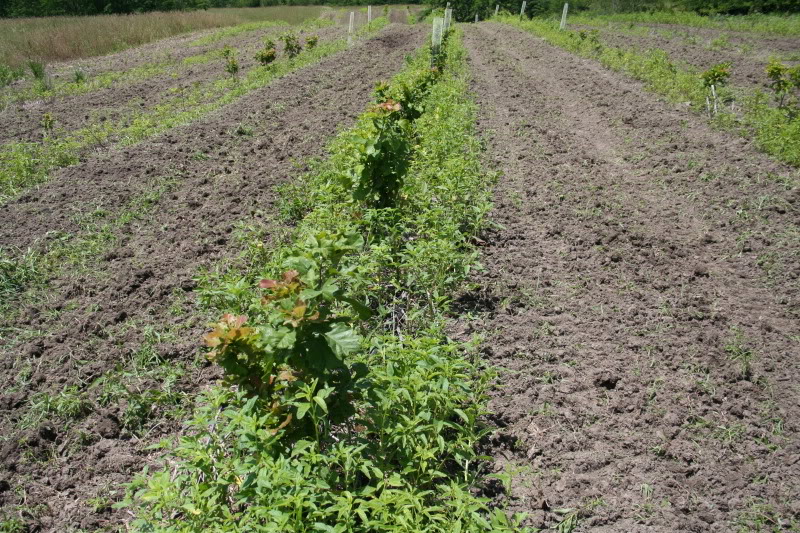dbltree
Super Moderator
I checked on the atrazine treated cuttings that John Walton of Big Rock Trees sent to me to to test and so far so good!
The area in general was sprayed with 41% glyphosate and anywhere from 2-4 quarts of atrazine per acre, allowing of course for the fact that using a backpack sprayer is hardly a precise applicator. If anything I suspect I got it on heavier rather then vice versa.
I planted in a low area overgrown with grasses and some blackberries and it looks like this now.

Most of the cuttings had sprouted and having done that are unlikely to be further affected by the atrazine at this point



a few had not sprouted but I doubt that atrazine was the cause

Most however were doing fine

Including the two where I applied it lightly to one and drowned the other one in atrazine


This is a simazine treated Ninebark cutting planted a month earlier

and a conventional seedling I sprayed atrazine on as well

Atrazine is not labled for any of these cuttings so this is something you can test at your own risk but like all herbicides, manufacturers rarely test every possible plant leaving it up to us to test it's safty and effectiveness on our own.
Based on what I see, atrazine is certainly safe on most if not all of John's cuttings but test some for your self next spring if you have atrazine on hand for corn or switchgrass...
The area in general was sprayed with 41% glyphosate and anywhere from 2-4 quarts of atrazine per acre, allowing of course for the fact that using a backpack sprayer is hardly a precise applicator. If anything I suspect I got it on heavier rather then vice versa.
I planted in a low area overgrown with grasses and some blackberries and it looks like this now.

Most of the cuttings had sprouted and having done that are unlikely to be further affected by the atrazine at this point



a few had not sprouted but I doubt that atrazine was the cause

Most however were doing fine

Including the two where I applied it lightly to one and drowned the other one in atrazine


This is a simazine treated Ninebark cutting planted a month earlier

and a conventional seedling I sprayed atrazine on as well

Atrazine is not labled for any of these cuttings so this is something you can test at your own risk but like all herbicides, manufacturers rarely test every possible plant leaving it up to us to test it's safty and effectiveness on our own.
Based on what I see, atrazine is certainly safe on most if not all of John's cuttings but test some for your self next spring if you have atrazine on hand for corn or switchgrass...






















